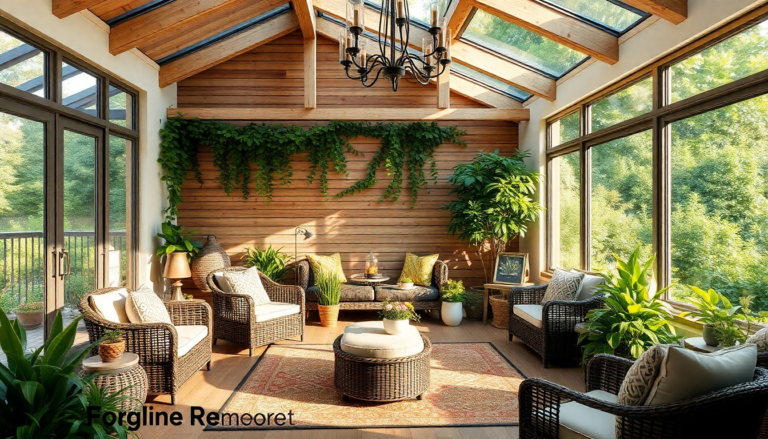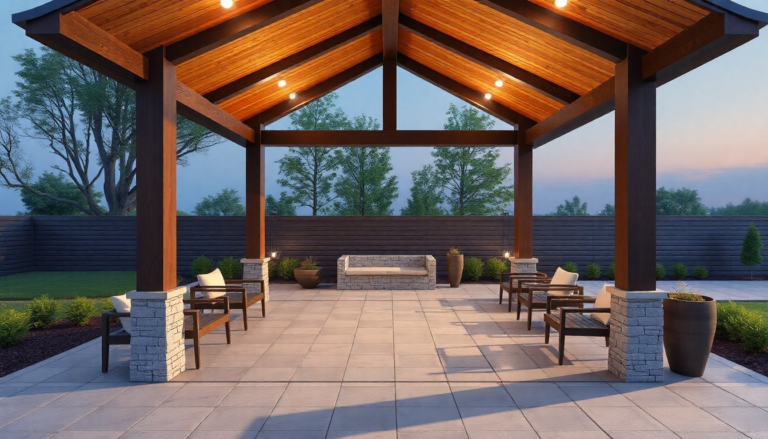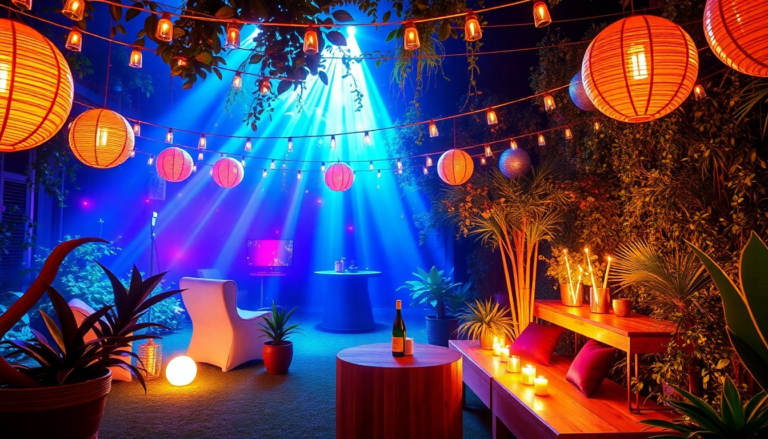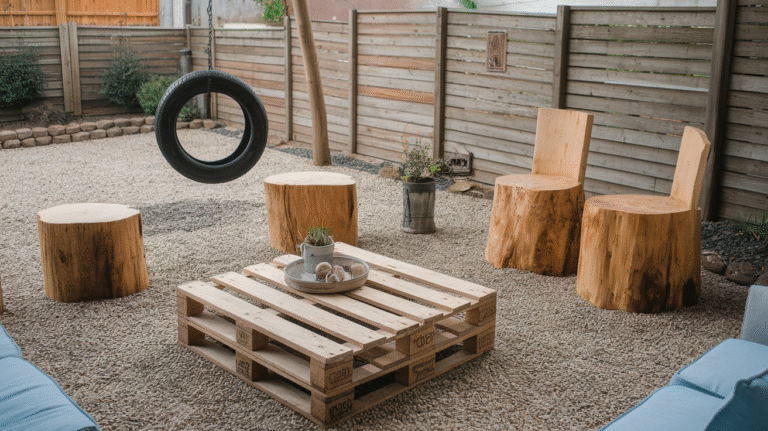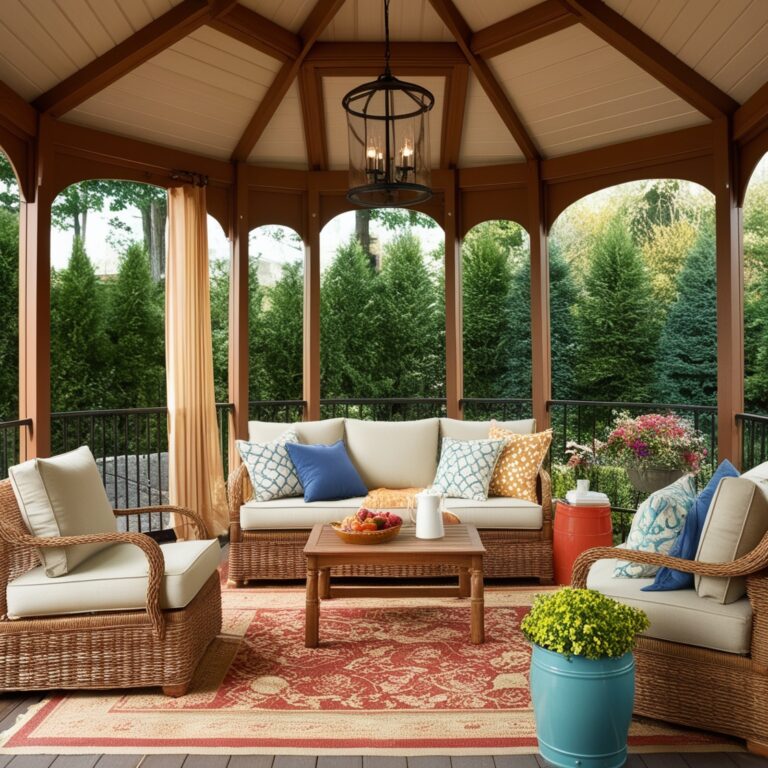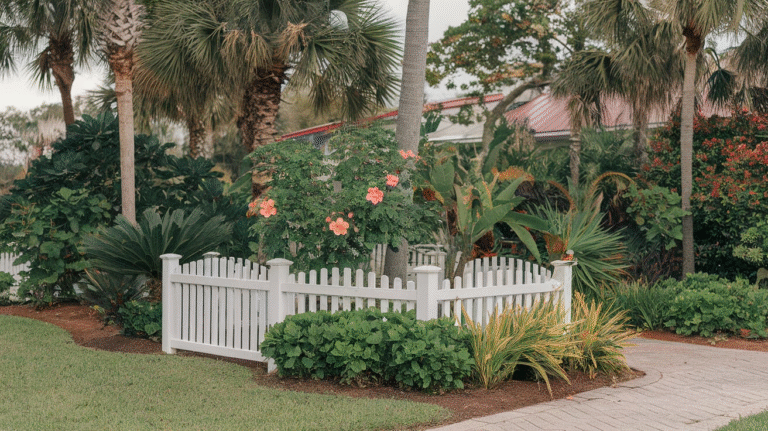20 Privacy Landscaping Ideas
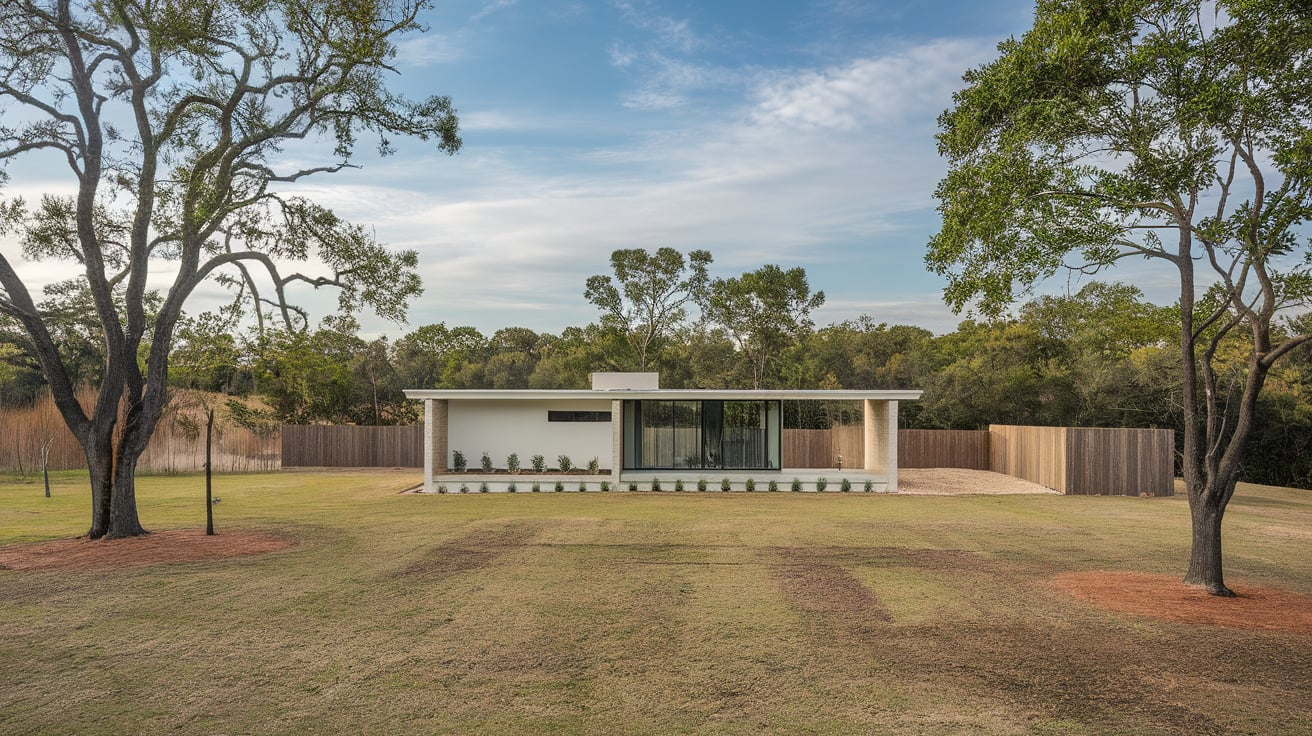
Your backyard should feel like your personal retreat—not a stage for the neighborhood to watch your every move.
Whether you’re sipping coffee in your robe or having a splashy summer BBQ, privacy matters.
But fencing off your space with cold planks of wood? That’s not the only way.
Let’s walk through 20 privacy landscaping ideas that don’t just block the view, but turn your outdoor space into a lush, serene haven.
I’ve tried several of these myself—some succeeded, some made the dog bark for a week—but all taught me something worth sharing.
1. Layered Planting: The Natural Privacy Shield
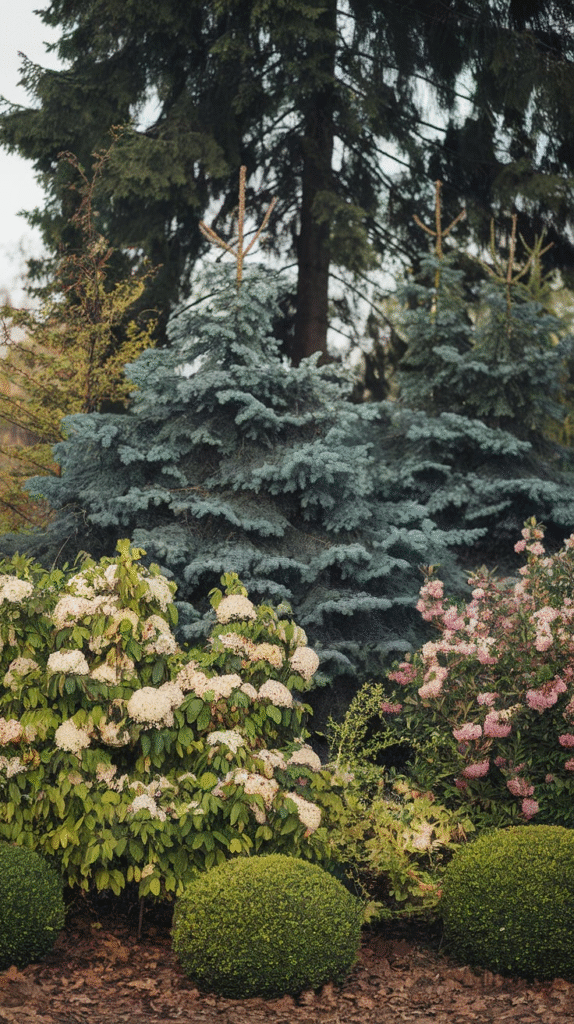
Forget a single row of trees. Layering plants of different heights mimics the way nature builds its own barriers.
Think tall trees at the back, medium shrubs in the middle, and shorter perennials in front.
It creates depth, beauty, and most importantly, it confuses any prying eyes.
Even nosy neighbors will struggle to peek through a natural wall that’s thick and varied.
I once tried this with junipers, boxwoods, and lavender.
Not only did it block the view from the second-story window next door, but the layers also added color, scent, and seasonal variation.
2. Bamboo Screens: Fast-Growing and Exotic
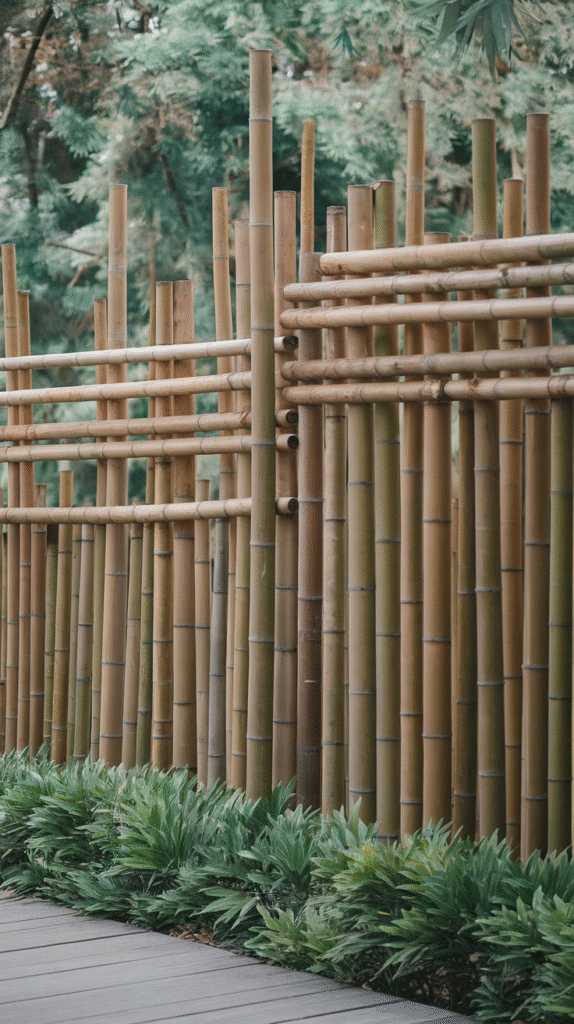
If you need a privacy fix yesterday, bamboo is your best friend.
Some varieties can grow up to 3 feet in a month during peak season.
Choose clumping bamboo (like Bambusa or Fargesia) instead of running types—unless you want it invading your neighbor’s BBQ area too.
I planted a row of clumping bamboo along the side fence two years ago.
Now it’s a 14-foot tall, swaying green curtain, and it rustles beautifully in the wind like nature whispering, “You’re safe here.”
3. Living Walls: Vertical Privacy With Flair
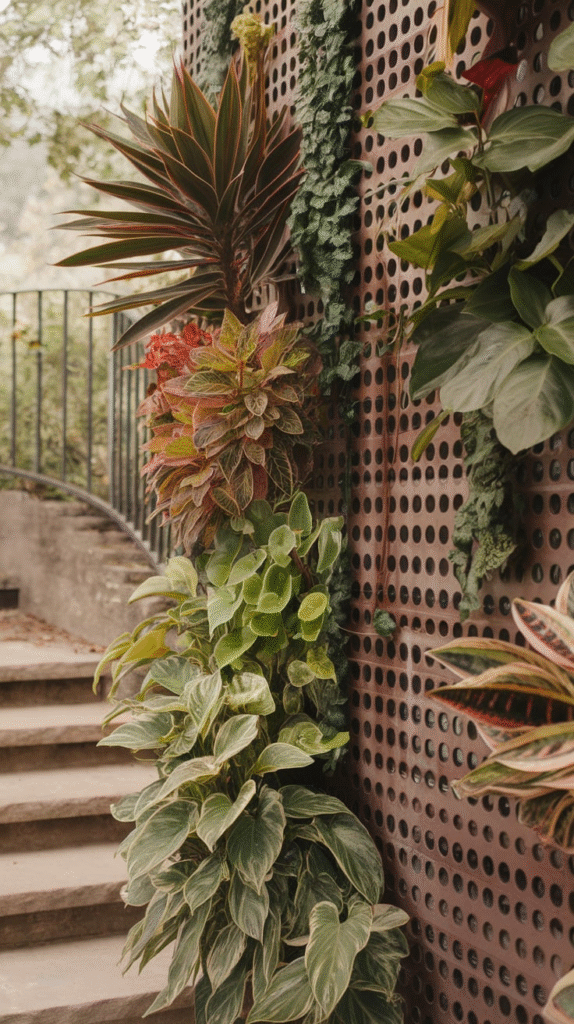
Got a small patio or balcony that feels more like a fishbowl?
Living walls—vertical gardens with trailing or climbing plants—work wonders.
You can use modular systems or just mount some planters and let ivy, creeping fig, or even strawberries take over.
Besides the privacy, a living wall reduces noise, improves air quality, and looks like a work of living art.
One study from the University of Washington found vertical greenery can reduce noise pollution by up to 50%.
4. Evergreen Trees: Year-Round Coverage
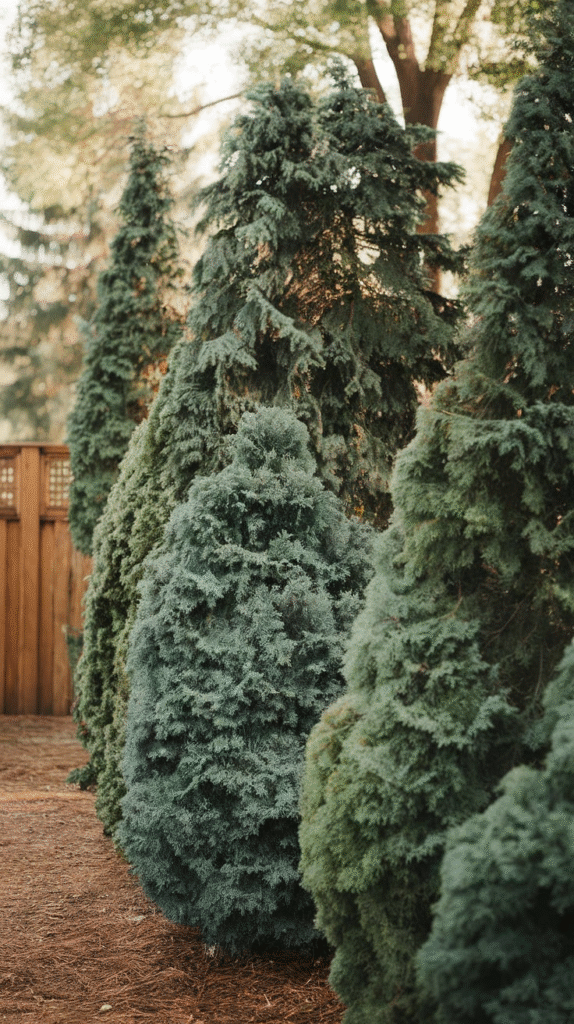
Deciduous trees are lovely, but they drop their leaves just when you need coverage most—winter.
Evergreens like arborvitae, spruce, or cypress provide full coverage all year long.
Arborvitae, for instance, grows 3 feet per year and can reach 15 feet in just 5 years.
In my case, planting a row of ‘Green Giant’ arborvitae along our property line stopped our neighbor’s second-floor bathroom window from peering directly into our deck.
It also became a favorite nesting spot for chickadees.
5. Trellises With Climbing Vines: Classic and Charming
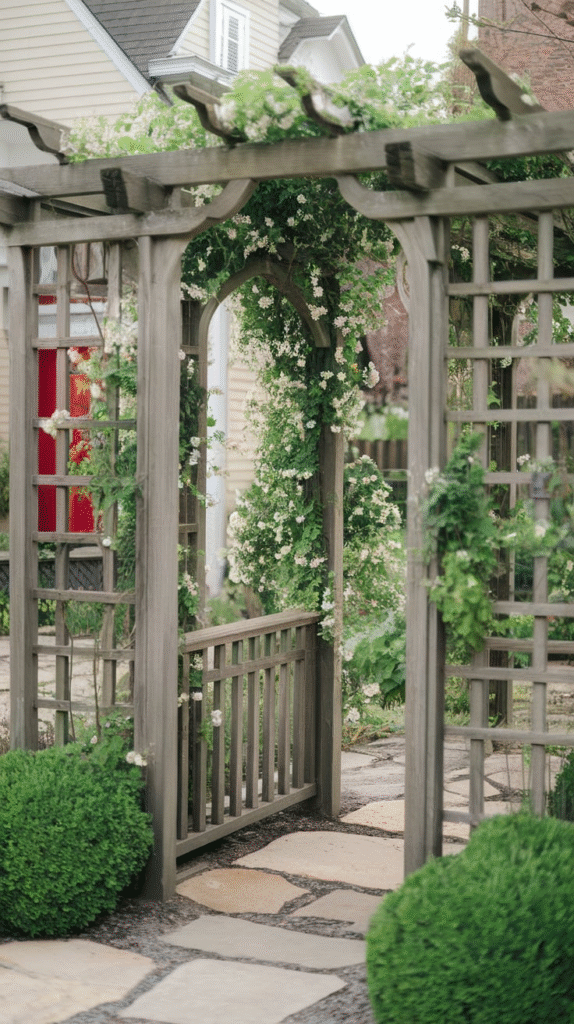
A wooden or metal trellis is simple, but once you let clematis, honeysuckle, or climbing roses take hold, you’ve got yourself a privacy wall with charm.
Trellises are great for balconies, patios, and small spaces, and you can combine them with other elements like container plants or pergolas.
The honeysuckle I planted on my trellis not only blocked the afternoon sun but made the whole yard smell like a candy shop in June.
6. Hedges: Timeless and Trimmed to Perfection
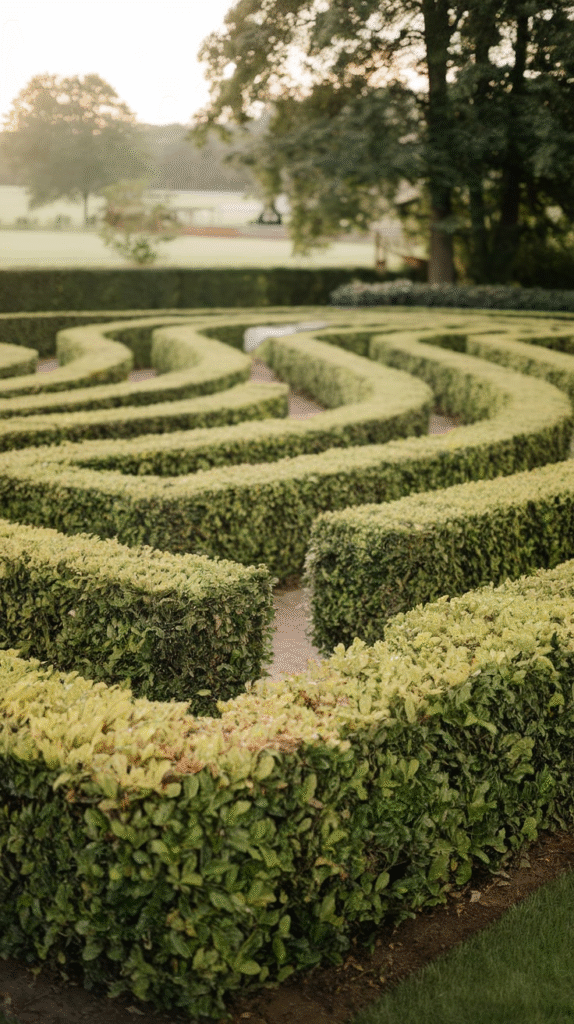
A hedge may sound old-school, but it’s privacy done with elegance.
Boxwood, privet, laurel, or yew can be trimmed into neat shapes or left a bit wild for a more organic look.
A mature hedge can be denser than a wooden fence, especially when well-maintained.
Studies show hedges can also reduce particulate pollution by up to 60%, making them ideal if you live near a road.
7. Pergolas and Lattice Roofs: Privacy From Above
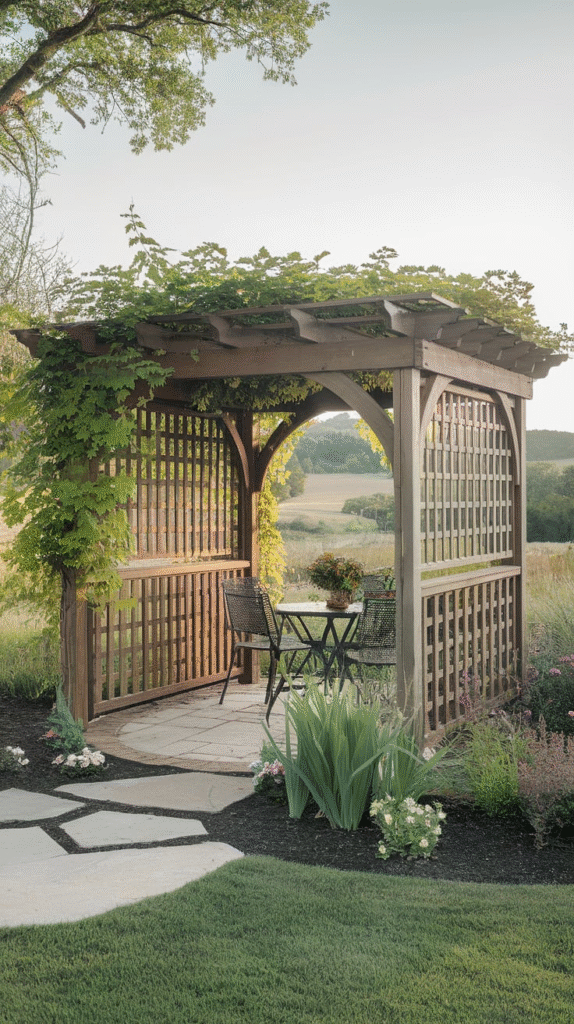
Sometimes, it’s not the sides that need shielding—it’s the view from upstairs windows or nearby high-rises.
A pergola with a lattice roof or a shade cloth can block vertical views. Add some trailing vines like wisteria or grapevines for a more natural look.
I added a pergola over our hot tub, and suddenly, it went from “awkwardly exposed” to “spa-like sanctuary.”
8. Ornamental Grasses: Movement and Mystery
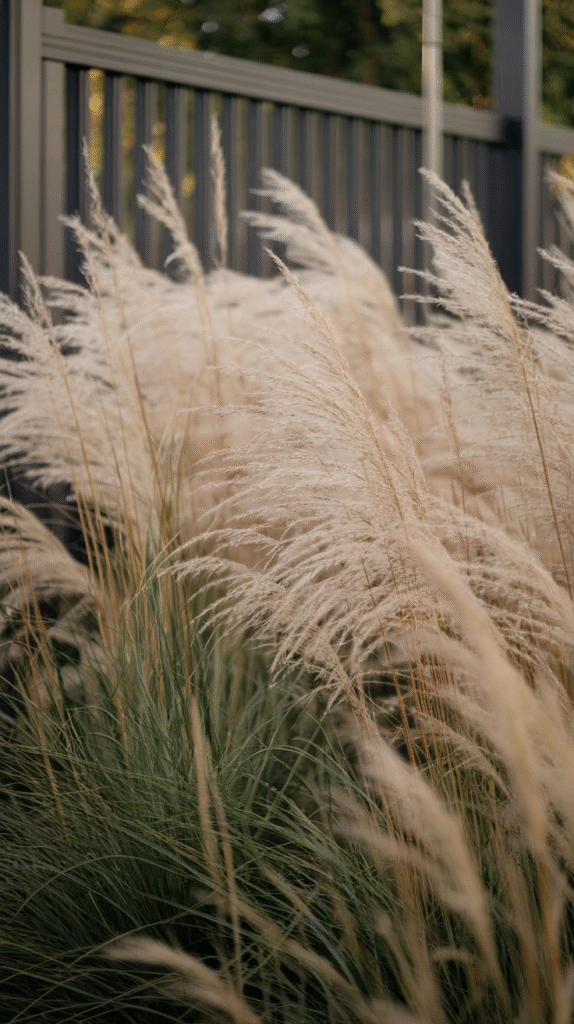
Ornamental grasses like miscanthus, feather reed grass, or fountain grass are perfect for semi-private spaces.
They sway in the breeze, catch the sunlight, and make a rustling sound that adds a little auditory privacy too.
Some grasses grow over 6 feet tall and create a soft, ever-changing barrier.
Plant them in clusters or along a path to create natural partitions.
9. Gabion Walls: Industrial Meets Nature
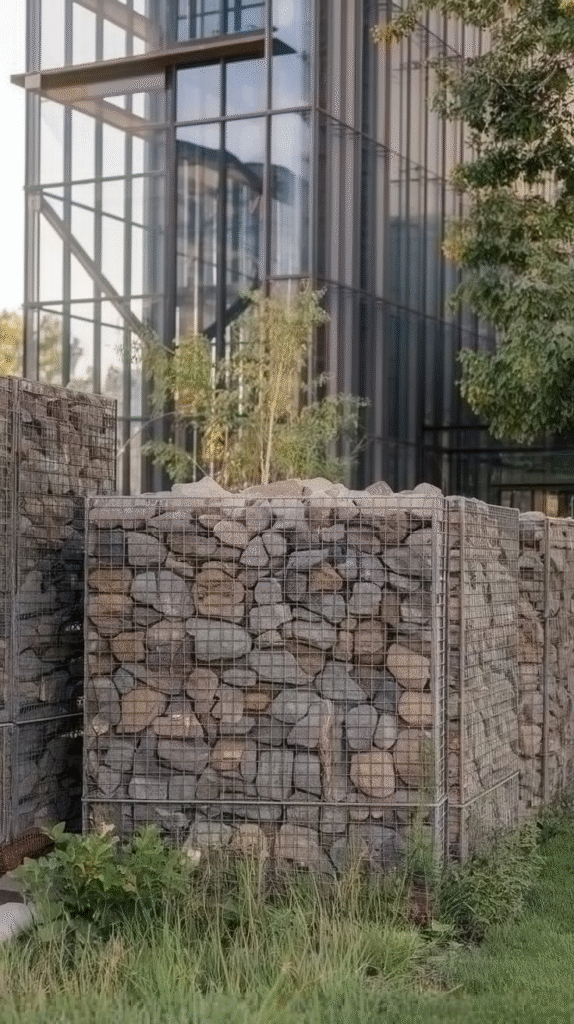
A gabion wall is made of wire cages filled with rocks, wood, or even recycled materials. They’re durable, stylish, and surprisingly versatile.
You can stack them high or use them as raised planters.
And the best part? They’re incredibly sound-absorbing, making them ideal if you live near a noisy street.
Plus, gabions scream, “I’m eco-conscious but also tough as nails.”
10. Tall Raised Beds: Garden + Barrier
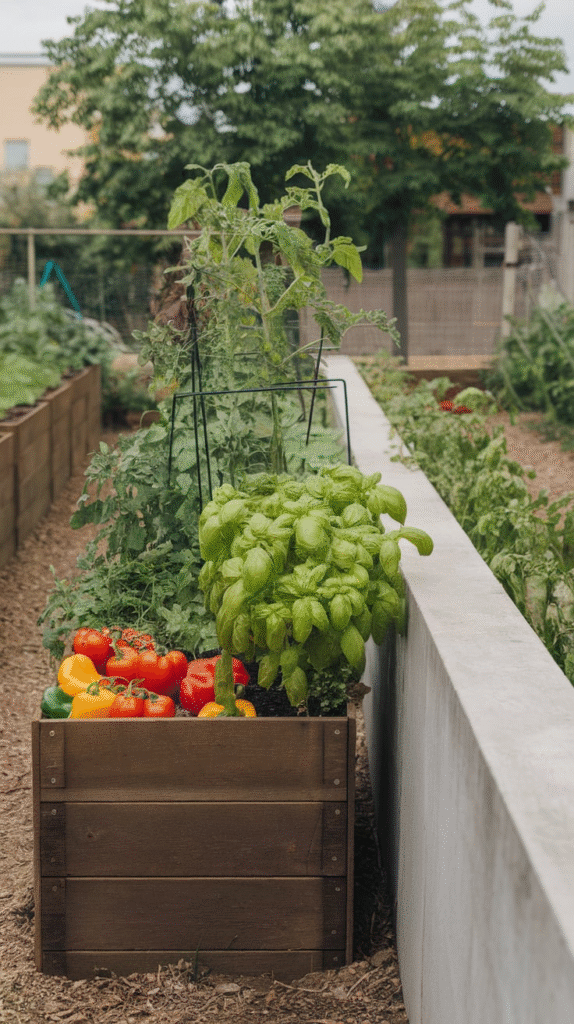
Build tall raised beds along the edge of your space and plant tall crops—think sunflowers, corn, or tomatoes with trellises.
It’s privacy with a side of produce. You’ll be growing dinner while blocking glances.
In our case, tomatoes on trellises completely shielded our patio table—and bonus, we had fresh Caprese salads all summer.
11. Hanging Planters and Curtains: Small Space Fix
If you’re in an apartment or renting, you might not be able to plant a whole forest.
But hanging planters and outdoor curtains can still give you that sense of seclusion.
Use them on balconies or porches, and mix herbs, ferns, or trailing plants like pothos for a layered look.
It’s like bringing a bit of Bali to your tiny balcony in Brooklyn.
12. Privacy Trees With Sculptural Shape: Form Meets Function
Instead of plain walls of green, go for columnar trees like Italian cypress, sky pencil holly, or columnar hornbeam.
They’re elegant, architectural, and perfect for narrow spaces.
A row of them can act like nature’s version of library shelves—tall, tidy, and filled with quiet.
13. Stone Walls with Moss or Ferns: Old World Charm
If your vibe leans more cottagecore or rustic, a short stone wall with moss or ferns growing along the cracks can create a whimsical privacy barrier.
Even a 3-foot-high wall feels psychologically private when softened with lush greenery.
My grandmother had one around her garden.
As kids, we always felt like we were stepping into a secret garden where fairies might be hiding behind the rhubarb.
14. Espaliered Trees: Art Meets Privacy
Espaliering is the technique of training trees (like apple or pear) to grow flat against a wall or fence.
It’s an old French technique that combines space-saving practicality with visual poetry. Plus, you get fruit!
Espaliered trees are perfect for narrow side yards or small gardens and offer seasonal privacy with a storybook aesthetic.
15. Water Features: Privacy You Can Hear
Sometimes it’s not about the view—it’s about the sound.
Adding a water feature like a bubbling fountain or stream can mask voices, reduce road noise, and create a serene environment.
The gurgling sound tricks your brain into feeling more secluded—even if you’re just a few feet from the property line.
16. Partition Walls With Niches
Build a decorative privacy wall out of concrete, wood, or composite, but add niches for plants or lanterns to keep it interesting.
You get all the visual separation of a solid wall without it feeling like a prison yard.
Use niches to grow herbs, flowers, or just add ambient lighting. It’s functional, beautiful, and completely customizable.
17. Mixed Material Fences: Break the Monotony
A fence doesn’t have to be just wood or vinyl.
Mix materials—wood slats with steel frames, or concrete with metal panels—to create a more attractive and less overbearing structure.
Add climbing plants or lighting for even more depth and privacy.
Mixed materials add sophistication and allow airflow while keeping things visually and physically private.
18. Shade Sails and Outdoor Canopies
Want a budget-friendly privacy solution for overhead or angled views? Shade sails are a modern, architectural solution.
They can be angled to block neighbors’ views from upstairs windows or the sun from blasting your seating area.
Choose darker colors for more shade and better privacy.
19. Edible Privacy Screens
Combine beauty, function, and food by planting tall edibles like pole beans, hops, raspberry bushes, or espaliered fruit trees.
Not only do you block views, but you get seasonal bounty and the bragging rights of saying, “Oh, that? Just my privacy screen made of snacks.”
20. Recycled Materials for Eco-Friendly Screens
Use recycled shutters, pallets, or vintage doors to create a one-of-a-kind privacy screen.
It’s sustainable, full of character, and customizable. Paint it, decorate it, or let the weather age it naturally.
I built one using old barn wood and hung mason jar lanterns from it. It’s not just a screen—it’s a conversation starter.
Final Thoughts: Curate Your Privacy, Don’t Just Build It
Privacy isn’t about shutting the world out—it’s about creating a space where you get to decide how much of the world gets in.
Whether you want a green cocoon, a stylish screen, or a combination of both, there’s a solution that fits your style, your space, and your needs.
And remember: landscaping for privacy doesn’t have to be boring or blocky. You can turn your yard into a secluded retreat that still feels open, lush, and inviting.
Take it from someone who’s planted, pruned, and replanted more privacy shrubs than he can count—it’s worth the effort.
Have a favorite tip from the list? Or one I missed? Let me know, I’m always up for a garden chat—with the curtains drawn, of course.

